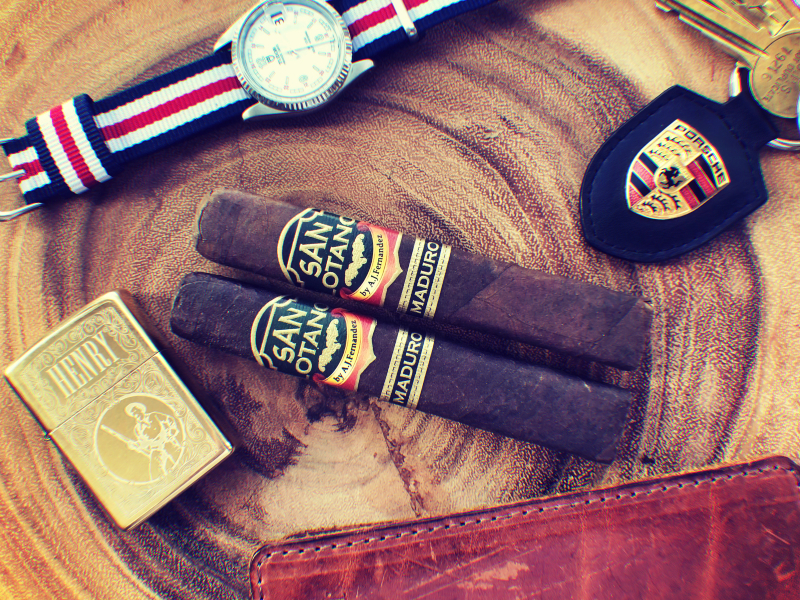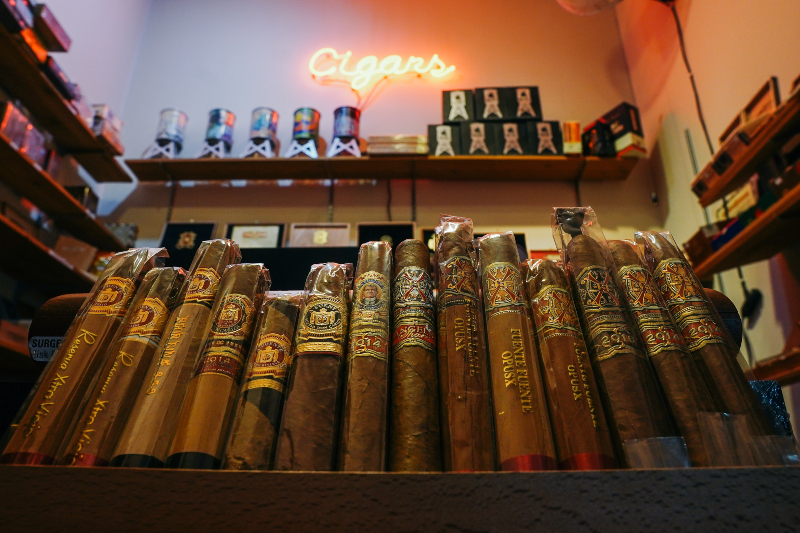TGR Staff
Cigars are one of the few reasonably acceptable ways to enjoy tobacco, unlike cigarettes or vaping which have taken on unfavorable images, smoking a cigar is viewed by many as being on the same level as enjoying fine wine. But while we would never encourage anyone to take up smoking, cigar clubs, lounges, and events are growing in popularity. We figured that if you are considering joining the cigar lifestyle, you might as well look like you know what you are doing, here are some basics to help you enjoy your first time smoking a cigar.
Types of cigars:
Parejo:
A 'Parejo' is a standard cigar, likely what you think of when you hear the word cigar. Cylindrical shape, four-seven inches on average, and requires a cut on one end. A Parjo is the most common type of cigar you will encounter.
Torpedo:
These look like a Parejo, but with a tapered end for the smoker.
Pyramid:
Like the Torpedo above, the Pyramid on the smoking end does need to be cut before you enjoy it.
Robusto:
A larger gauge diameter but short cigar, their name is derived from the robust flavors from the multiple layers of tobacco. Expect most to be four-five inches long.
Belicoso:
Rounded ends are the defining factor for the Belicoso, it looks just like a Parejo with round ends and is said to draw exceptionally well.
Churchill:
Named after Winston Churchill, these cigars are defined by their large diameter and fairly standard seven-inch length.
Corona:
Is another prototypical cigar, and considered the default size and interchangeable with Parejo, these will be five to six inches long.
Petit Corona:
As the name suggests it is a smaller version of the Corona being under five inches.
Double Corona:
The larger version of the Corona, ranging between 7 1/2 to 8 1/2 inches.
Toro:
Sometimes called a Corona Gorda, they are nearly indistinguishable from a Churchill, but are generally about one inch shorter.
Presidente:
With an average size of seven to nine inches, Presidente cigars are known for their overall size and their long burn times. While not super common, thanks to their multi-hour burn time, most seasoned smokers will have one at least once.
Perfecto:
Thin on the ends with a thicker middle, a Perfecto can come in a wide range of sizes and depending on the maker may be pre-cut or need to be cut before smoking.
Cutting a cigar:
If you are going to get into cigars you should invest in a cigar cutter, if you don't have a cutter, you may use a knife, but biting the end off a cigar is for movies or "emergency" situations. With a cutter, a swift, strong motion will produce a clean cut and give you the best smoking experience.
Lighting a cigar:
While it might just seem like a simple action there is an art to lighting a cigar, the preferred method is a touch lighter or wooden matches, avoid using a standard cigarette lighter as the experts will tell you it can affect the flavor of the tobacco, but if it is all you have, use it. Before you put the cigar in your mouth prime it by burning the end evenly, once you see the orange glow, you can start to puff. Also don't worry if the cigar catches on fire, just blow it out and keep going.
Smoking a cigar:
Unlike a cigarette or vape, you don't inhale when smoking a cigar, if you do be ready to hack up a lung. Instead of drawing in the air with your diaphragm, act like you are sucking on a straw and fill your mouth with the smoke and blow it out. The cigar should start producing a thick white smoke after a few puffs.
Now that your cigar is lit and you have started smoking you can slow down and enjoy the real point of smoking cigars, socializing. To keep it from going out, take a drag around every minute or so and relax. Smoking a cigar requires time, depending on the size you can be smoking for 30 minutes to a few hours, be sure you have planned the time to enjoy your cigar before you light it up.
Unlike cigarettes, you don't need to tap off the ash right away on your cigar, in fact, the bigger/longer the ash is the better quality the cigar. But you also don't want the ash to get cartoonishly long as it can limit airflow and cause the tobacco to burn unevenly, don't let the ash get much longer than an inch. When you do go to remove the ash, you don't tap the cigar, gently roll it on the ashtray until it falls off.
Humidors:
Serious cigar enthusiasts have humidors to maintain their collection, the humidor helps keep cigars fresh and also protects them from invasive bugs that enjoy feasting on tobacco. If you buy a humidor be sure to "season it" before you use it. Seasoning a humidor is done with distilled water, a process that can take a few days. Don't worry about humidors until you start investing in some valuable cigars or a number of cigars that will require you to store them for longer periods of time.
You will also find that many times a good whiskey is paired with a cigar, to learn more about whiskey check out our Beginner Guide to Whiskey.







_websize.jpg)










